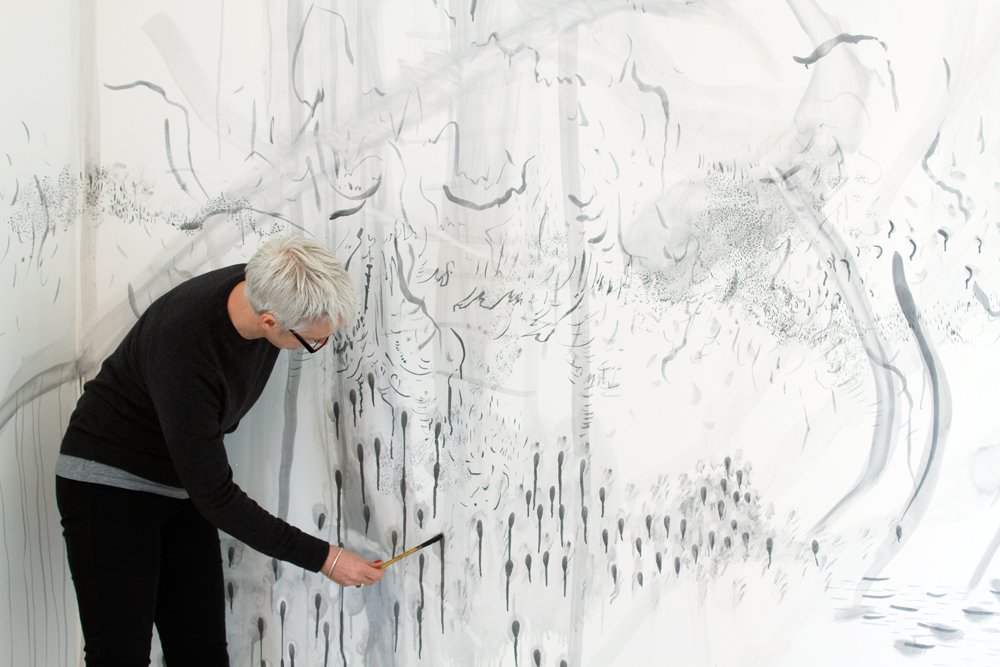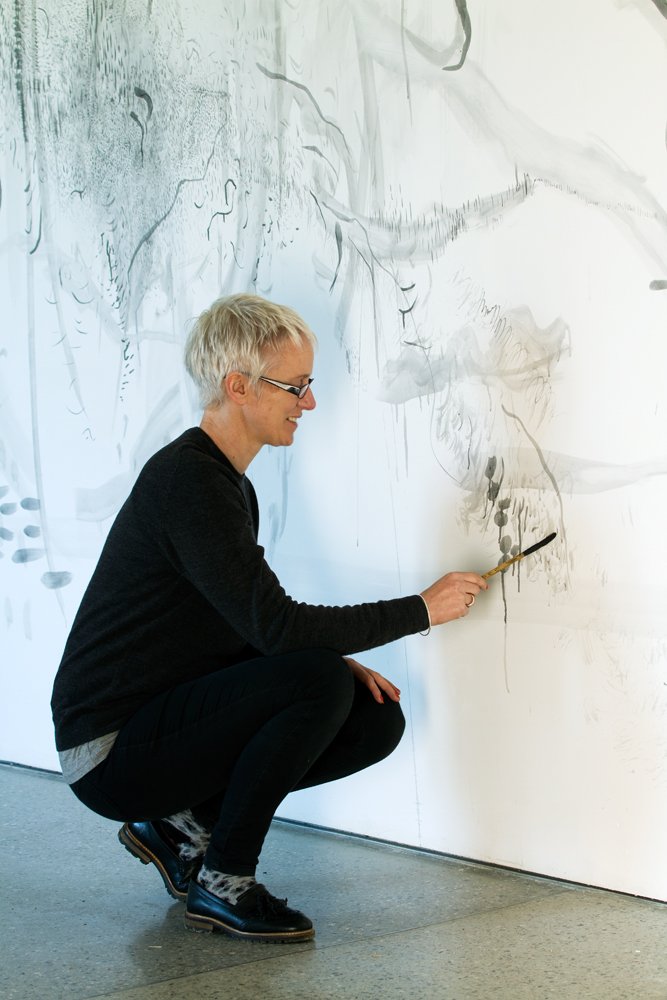““And all this is only momentary, is only a fragment in time that will never come again…”
During my recent residency at Kestle Barton in December 2013, I discovered Frenchman’s Creek. It was low tide, a damp mist hovering in a grey landscape of fallen trees sinking into a muddy swamp. It was silent: a fallen creek exposing the limbs of dead trees. The metaphor of low tide echoed an emptiness and transience I found familiar in my work. Returning to the gallery space I began working directly onto the walls making a series of gestural marks suggestive of the environment. Influenced by a recent trip to China the stains were made using blocks of Chinese black ink and brushes to create loose free impressions translating the feeling of the silent fallen creek at low tide. The wall drawings and language of marks are being developed as a setting for an animation of a dying goldfinch to be projected into the drawn landscape.
KESTLE BARTON
FALLEN
12 April - 1 June 2014
The goldfinch has a long history of mythology, superstition and folk law attached to it. This body of work has evolved through working with two goldfinches that flew into the window at Kestle Barton two years ago. In the painting, a prayer to God, (Louis Welden Hawkins) the goldfinch becomes a messenger of prayer exploring the desire for freedom and the unspoken language that exists between human and birds. I have continued to use the goldfinch metaphorically as a prayer bird in this body of work exploring the concept of praying, intense desire and the need to change reality in some way. Working with a dead goldfinch points to the futility of prayer and becomes a poignant reminder of the transience of everything in life. A melancholic vision of loss the prayers fall unheard, unanswered, silent and disintegrating. The goldfinch was a favourite child’s toy in the renaissance and was often depicted in religious paintings. It was the bird that plucked a thorn from Christ’s brow on the was to the Crucifixion.
The delicacy and ephemeral qualities of a dead bird are so light it is hardly there at all. I have found that through drawing with charcoal and graphite I can begin to examine the dead bird. It is like drawing with dust. Through drawing I can work with the bird from the inside out in a way that explores my relationship to death and the profound beauty that can be found in the emptiness of what is lost.
Images: Lucy Averill



